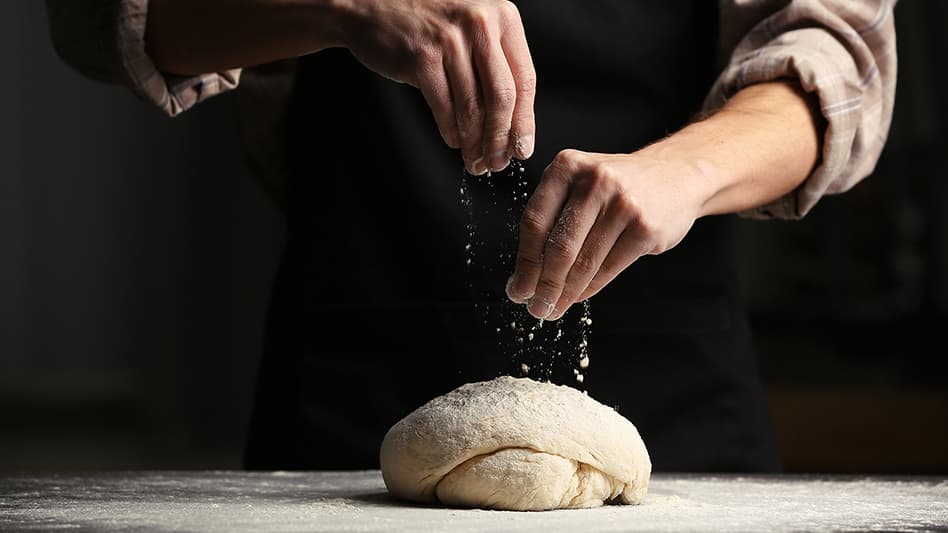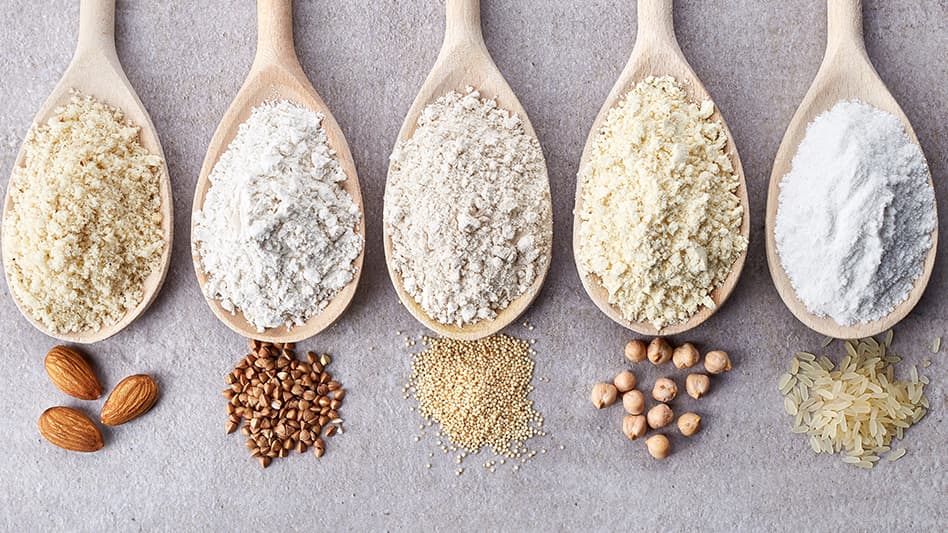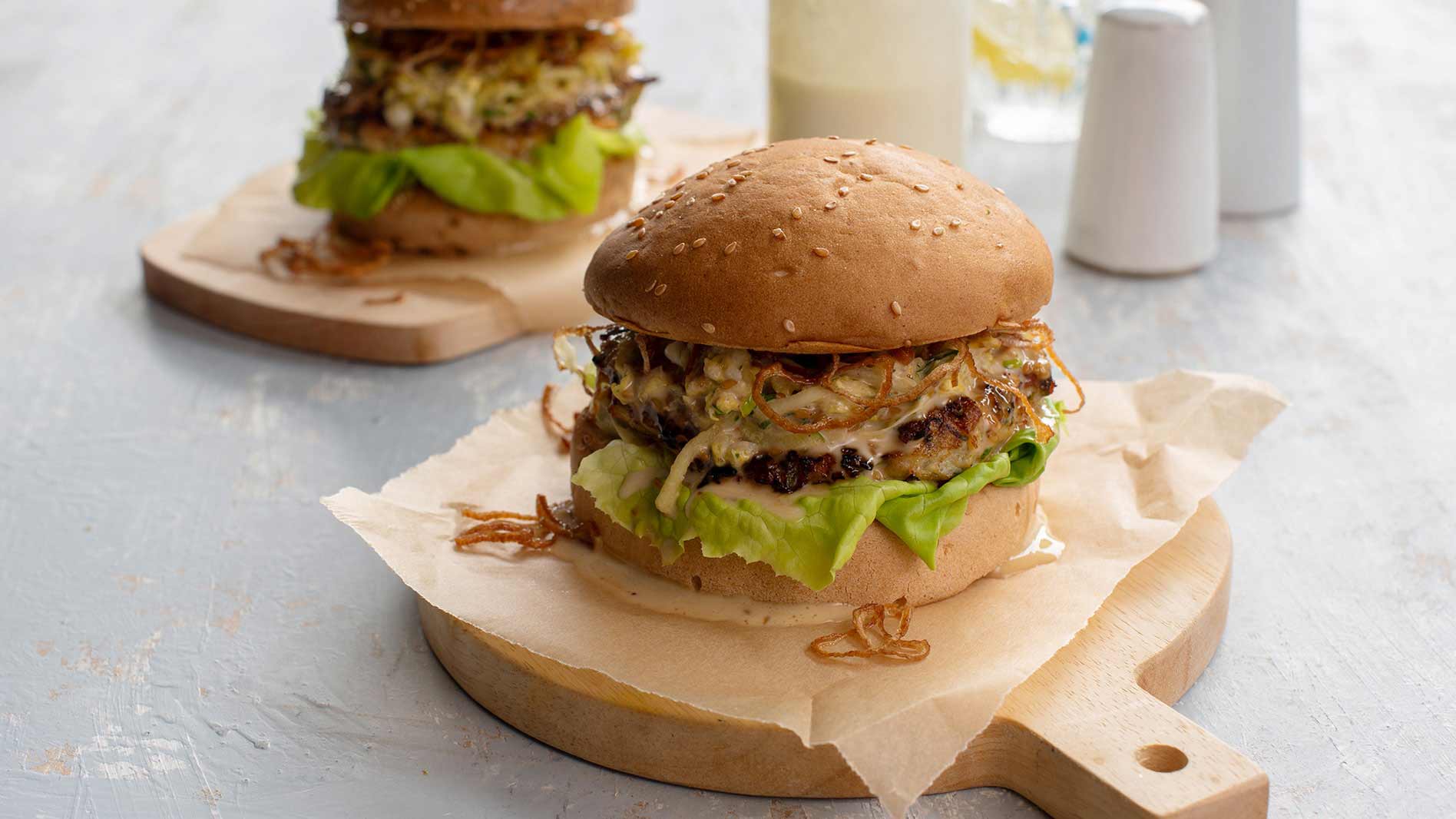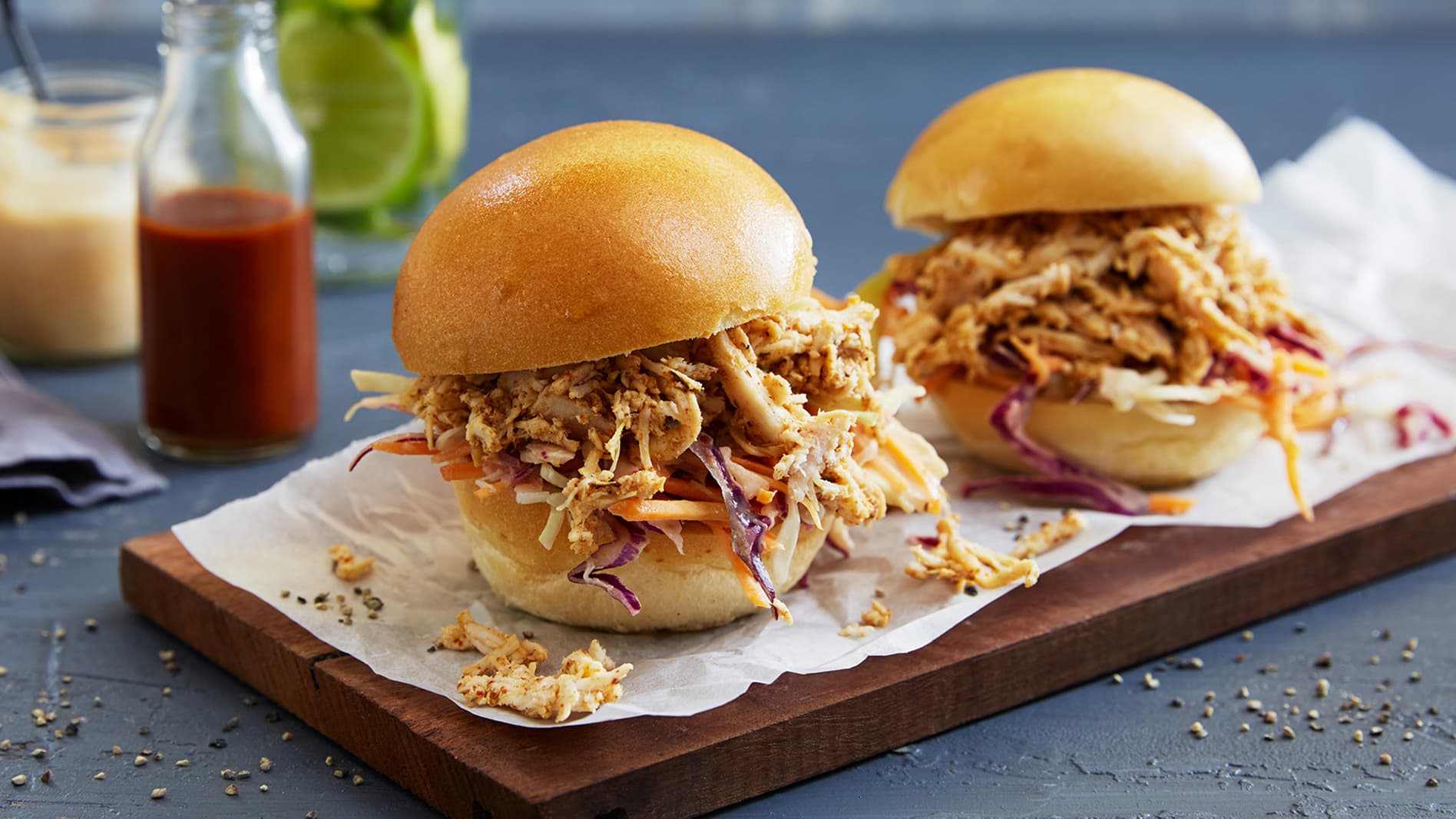Be inspired with recipes created by chefs.
Sign up for updates about products, special offers, news and promotional materials from Goodman Fielder.

Summary
When it comes to gluten free baking, there are a number of different gluten free substitutes and techniques that can hep your turn your baked goods into gluten free delights! From different types of flour, to avoiding cross contamination, we go straight to the experts to help guide your gluten free baking experience!
Let’s start at the beginning, what exactly is gluten?
Gluten is a common ingredient when it comes to baking. It is a protein that is found in wheat, barley, rye and oats that gives structure and elasticity that helps baked goods rise while keeping their shape and chewy texture.
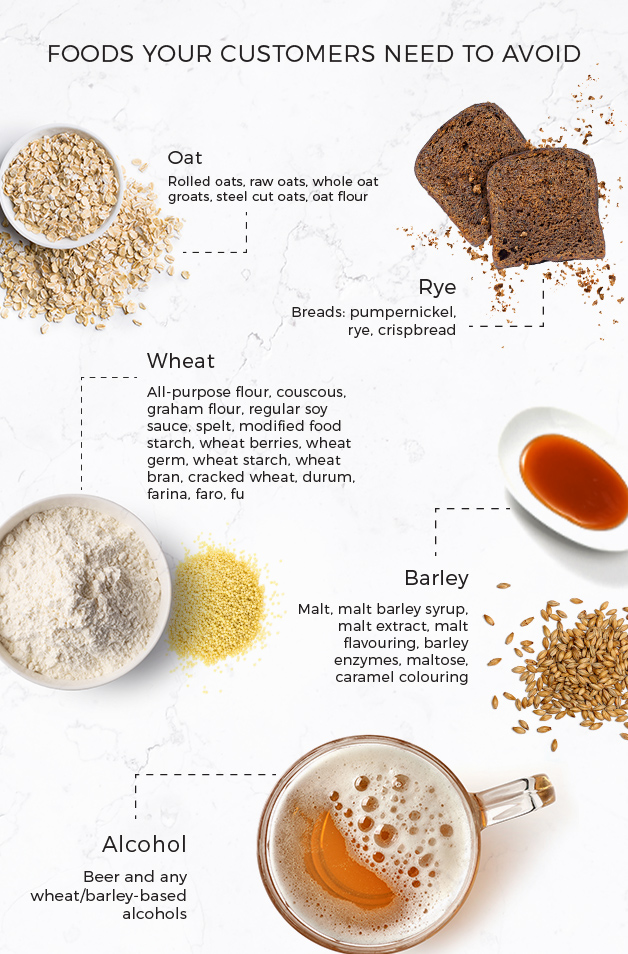
How the perception towards gluten has changed:
While gluten has always been used in cooking, the perception towards the ingredient has changed amongst consumers. While most customers can eat gluten with no worries, many also need to avoid it for health reasons, such as coeliac disease; which is a serious autoimmune disease that affects 1 in 70 Australians.
When gluten is eaten by those with the disease, it causes damage to the small intestine and prevents the body from absorbing nutrients. Along with coeliac disease, many Australians are also avoiding gluten in a bid to avoid upsetting their stomach and causing bloating.
So, how important is it for venues, especially bakeries where gluten intake is high, to cater to the needs of their gluten free customers? Well, very. This is because reports have found that 99% of gluten free customers will most likely to return to a venue if they had received a good gluten experience.
So, what gluten free flours are available for my bakery:
When it comes to baking goods free from gluten, it’s never been easier. This is because there are now a range of flours on the market that don’t contain gluten.
So, what gluten free flours are available for your venue? We speak to owner of Melbourne’s Adam’s Bakehouse, Chef Adam Khazaal:
• Amaranth flour:
Amaranth flour is produced by grinding seeds from the amaranth plant into a fine powder. It’s fine in texture and can absorb water easily, which is what gives it great emulsifying properties.
Flavour: Nutty and quite assertive in flavour.
Nutrient profile: High in protein – contains 30% more protein than rice, wheat, oats and rye.
Application notes: If used alone, baked goods can become too dense and won’t rise properly. It’s recommended that it’s combined with other gluten free flours to mimic the properties of gluten.
• Almond flour and almond meal:
Almond flour is made from blanched almonds that have had the skins removed and is grounded more finely than almond meal. Whereas, almond meal typically still contains the skins and has a coarser grind during the production process.
Flavour: Both types offload a strong almond flavouring.
Nutrient profile: High fat content that adds depth and richness to baked goods.
Suitable for: Macarons, airy cakes, cookies and quick breads.
Chef Adam’s comment: “Almond meal gives a big flavour, so you don’t have to use any many ingredients. Basically, you’re getting more flavours by using natural nuts. So, for cakes and desserts, I would recommend using almond meal”.
• Buckwheat flour:
The grinding of the buckwheat plant forms the dark coloured flour. It has a light, soft texture and is very delicate and distinctive. It can absorb considerable amounts of water but can become slimy if overworked.
Flavour: Strong, nutty flavour.
Nutrient profile: Contains more protein than rice, wheat, millet and corn.
Suitable for: Pancakes, dense breads and crepes. If you are using it for cookies or pies, use less and mix with another flour.
• Coconut flour:
Made from dried coconut flesh that has had the oil removed. Coconut flour is fine in texture and should be used in conjunction with other gluten free flours, as it can dry out goods.
Flavour: Distinctive coconut flavour.
Nutrient profile: High fibre content.
Suitable for: Cakes, muffins, pancakes and cookies.
• Corn (maize) flour:
Corn flour is made from the whole corn kernel and offers a fine yellow colouring, but it can also come as white or blue depending on the variety of corn that’s used. Its texture is fine and smooth, very similar to rice flour.
Ingredients: Made from whole corn kernel.
Flavour: Sweet flavour.
Nutrient profile: High fibre content.
Suitable for: Waffles, breads, pancakes and tortillas. Can also be used as a thickener.
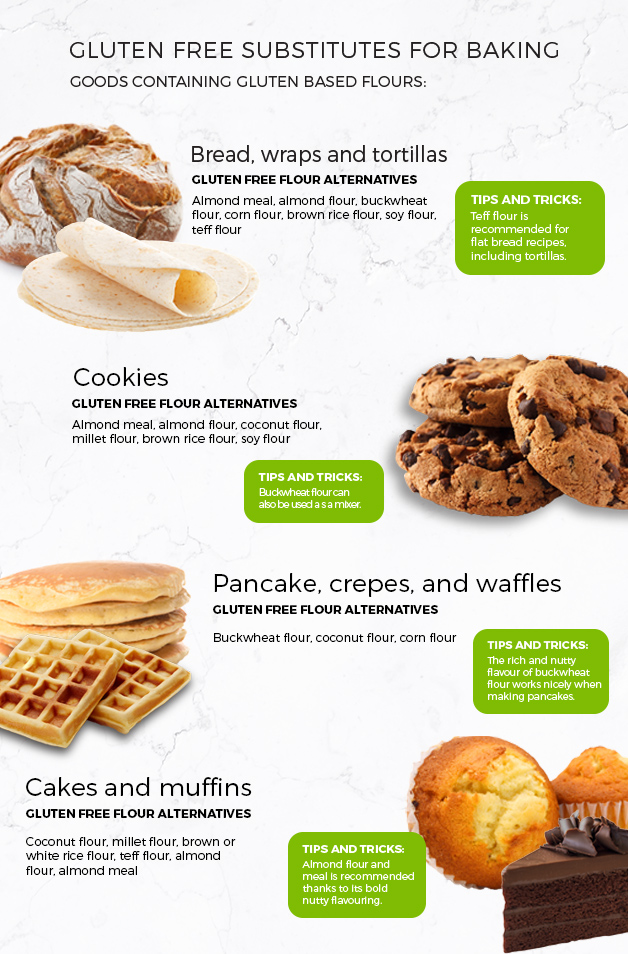
• Millet flour:
Millet flour is produced by pin milling a variety of millet into a fine flour. It is a pale, yellow colour and is often used in African and Indian dishes.
Flavour: Mild, sweet and nutty in flavour.
Nutrient profile: High protein flour and also high in fibre.
Suitable for: Muffins, cookies, cornbread or as a thickener.
• Quinoa flour:
Made by grinding quinoa seeds to a fine consistency, quinoa flour has the same look and feel to wheat flour and can be used across a broad range of baking recipes.
Flavour: Strong earthy, nutty flavour and aroma. Slight bitterness of quinoa
Nutrient profile: High in protein.
Suitable for: Chocolate and coffee recipes, though it is recommended that it is mixed with other flours, as its flavour content can become overpowering.
• Rice flour:
A common substitute for wheat flour, rice flour is made from finely milled rice and can be made from either white or brown rice.
Flavour: Brown rice flour is slightly nutty, whereas white rice flour has a bland flavour.
Nutrient profile: High fibre and protein without the presence of gluten.
Suitable for: Brown rice flour is used for bread loaves, artisan bread, muffins and cookies, while white rice flour is considered a basic flour for gluten free baking.
Chef Adam’s comment: “Rice flour is one that is now coming into the market, it is high in proteins, just not gluten proteins – the protein count in flour is what gives the bread the structure. So, with rice being high in protein, it would give [the baked goods] the stability you are looking for.”
• Soy flour:
Soy flour is created from ground soybeans and brings moisture to baked goods. It is a cream to yellow colour.
Flavour: Varies from a beany flavour to a sweet, mild flavour.
Nutrient profile: High fat and protein content.
Suitable for: Brownies, cookies and breads.
• Teff flour:
Teff flour is made from the fine ancient grain that comes in a variety of colours, from white and red to dark brown. It has a slight gritty texture and complements exotic spices.
Flavour: Subtle sweet, nutty flavour.
Nutrient profile: Rich in B vitamins and is a great source of calcium and magnesium.
Suitable for: Cookies, cakes, tortillas and flat breads. Has the ability to create a soft crumb in gluten free baking.
How do I bind ingredients using non-gluten products?
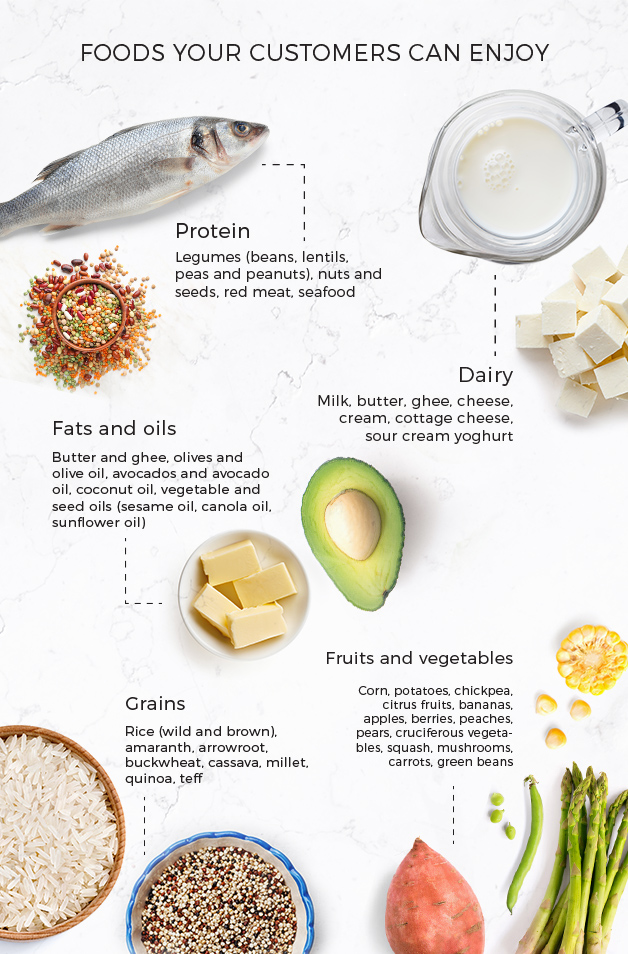
The process of binding naturally occurs when wheat flour is used during the baking process. With the use of gluten free flours, this element is removed, making it essential for bakers to use additional ingredients.
Chai seeds are commonly used to create the bind due to their gelling ability when mixed with liquids such as water and work perfectly for breads and muffins. Some chefs also use flaxseeds or psyllium husks for breads that heavily rely on gluten. Psyllium husk becomes gelatinous when hydrated, adding the flexibility needed for dough.
The importance of avoiding cross contamination in baking:
When it comes to cross contamination between gluten and non-gluten products, taking all precautions is crucial. Cross contamination occurs when allergens from other food sources are transferred to allergen free foods. And for those who suffer from coeliac disease, as little as 50mg of gluten can cause damage.
In high risk environments such as bakeries, it’s important to either use a separate preparation room or to create barriers for gluten free zones. “You need to make sure your whole table is clean from gluten,” chef Adam explained.
“You have to clean your whole station and use separate utensils or make sure all your utensils are sterilised because if there is one or two specs of gluten found, a coeliac sufferer can react poorly to that.” Chef Adam explained that most sites these days “have a separate bench or kitchen area they use for only gluten free because the reactions are deadly”.
Cross contamination can occur when:
- Handling or storing gluten free products with or near products that contain gluten.
- Using the same utensils for multiple food products.
- Reaching across surfaces or sharing equipment.
- Staff moving from gluten containing foods to gluten free food prep without changing gloves, aprons or washing hands.
Conclusion:
Creating baked goods that are gluten free is a must these days, especially as more and more customers turn away from gluten. But when it comes to creating delicious gluten free goods, always be aware of all of the ingredients you are using because other ingredients, such as chocolate, sprinkles and baking powder may contain gluten.
If you are adapting existing recipes to gluten free, establish exactly what ingredients contain gluten beforehand as not all recipes can be adapted successfully. Remember, baking is like a science, it takes a lot of trial and error to ensure the perfect outcome if achieved.
Want to download your own guide to gluten free baking? Now you can – simply fill out the form below and it will be emailed direct to your inbox.
Related Ideas
2nd February 2020
Your Go-To Guide for Gluten Free Baking
Check out our gluten free baking guide now - and download your free copy for your kitchen.
1st October 2019
Breakfast Tradie Sandwich
Chef Karyn whips up a quick and easy breakfast tradie sandwich, using two meats, eggs and hashbrowns. This is the classic big breakfast dish all in one sandwich.
2nd July 2019
Gluten Free Burger With Chicken, Kim Chi and Sesame Mayonnaise
With more customers following a gluten free diet, having meals free of gluten has never been more important. This burger recipe will have your customers rushing back for more.
